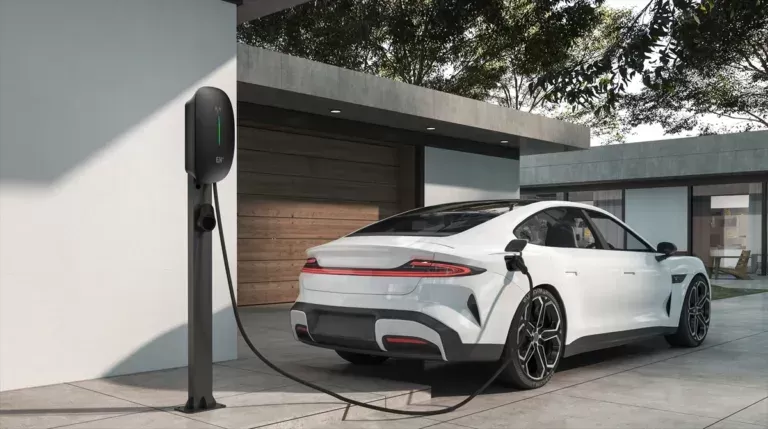Notifications

6 minutes, 42 seconds
-62 Views 0 Comments 0 Likes 0 Reviews

Electric vehicle (EV) owners often expect fast and consistent charging speeds, but several factors can slow down the process. The two main limitations are the vehicle’s maximum charging capacity and the China EV Charger’s output power. Even if your EV supports high-power charging, using a lower-rated charger will restrict speed. Conversely, a high-power charger won’t exceed your car’s built-in charging limits.
Understanding why your EV charges slower than expected can help optimize charging sessions, extend battery life, and prevent frustration. Below, we explore the key factors affecting charging speeds and provide best practices for efficient charging.
Not all EVs charge at the same rate. Manufacturers design vehicles with varying charging capabilities based on battery size, cooling systems, and onboard charging technology.
AC Charging (Home & Public Slow Chargers):
Entry-level EVs: Typically limited to 3.7kW or 7kW
Mid-range models: Often support 11kW
Premium models: May handle up to 22kW
DC Fast Charging (Public Rapid Chargers):
Economy models: Often capped at 50kW
Mainstream EVs: Usually support 150kW
High-performance models: Can accept 250kW or more
If your EV maxes out at 50kW, plugging into a 350kW charger won’t speed things up—your car’s hardware is the limiting factor.
EV batteries, like those in smartphones and laptops, degrade with use. As the battery ages:
It loses capacity, reducing range.
It becomes less efficient at accepting high charging speeds, resulting in slower top-ups.
While this isn’t a major issue for overnight charging, it can be frustrating during long trips when relying on fast charging. Most EVs have battery management systems (BMS) that slow charging to protect battery health.
EV batteries charge fastest when nearly empty and slow down as they fill up:
0-50% SOC: Charges rapidly (optimal for fast charging)
50-80% SOC: Slower, but still relatively quick
80-100% SOC: Very slow (can take as long as 0-80%)
Many EVs reduce charging speed above 80% to prevent overheating and prolong battery life. For long trips, charging to 80% and moving on is often faster than waiting for a full charge.
Not all charging stations deliver the same performance. Common problems include:
Underpowered Chargers: A 50kW charger will be slower than a 150kW+ station, even if your car supports faster speeds.
Shared Power Between Multiple Plugs: Some stations split power between connectors, reducing charging speed if multiple vehicles charge simultaneously.
Faulty or Damaged Equipment: Worn cables, broken connectors, or software glitches can reduce efficiency. High-traffic stations are more prone to wear and tear.
Extreme heat is a major factor in slowing charging:
Battery Safety: EVs monitor temperature to prevent overheating.
Thermal Throttling: When the battery gets too hot, charging speed reduces to avoid damage.
Thermal Runaway Risk: Overheating risks dangerous battery failure, so safety is prioritized over speed.
In hot climates, parking in the shade or charging during cooler hours can help maintain optimal speeds.
EVs receive over-the-air (OTA) updates that may change charging behavior. Manufacturers might:
Optimize battery longevity by slowing charging at high SOC.
Adjust thermal management to improve safety.
Fix bugs that previously allowed faster but riskier charging.
If your EV suddenly charges slower after an update, it likely prioritizes battery health over speed.
Sometimes the problem lies with the charger, not the car:
Damaged cables (kinks, fraying, bent connectors)
Overused public chargers subject to wear
Software malfunctions (rebooting the charger or switching stalls may help)
If charging is unusually slow, try a different station to rule out equipment issues.
Daily Charging Habits
Keep SOC between 20-80% for balanced speed and longevity.
Avoid frequent 100% charges unless necessary for long trips.
Long-Distance Travel Tips
Charge to 100% before departure for maximum range.
Aim for 80% at fast chargers—the last 20% takes much longer.
Plan stops around 20-80% charging for the fastest top-ups.
Maximizing Fast Charging Efficiency
Use DC fast chargers between 20-50% SOC for peak speed.
Avoid fast charging in extreme heat—battery cooling takes priority.
Check charger ratings to ensure compatibility with your car.
EV charging speed depends on multiple factors—from your car’s hardware to environmental conditions. While slower charging can be frustrating, understanding these limitations helps optimize performance and extend battery life. By following best practices—such as avoiding extreme SOC levels, using appropriate chargers, and monitoring battery health—you can ensure efficient charging and a smoother EV ownership experience.
If charging speeds seem unusually slow, check for equipment issues, battery health, or recent software updates. With the right approach, you can balance speed, convenience, and long-term battery care.Know more about Google SEO Directory
China EV Chargers EV Charger Manufacturer EV Charging Solutions

